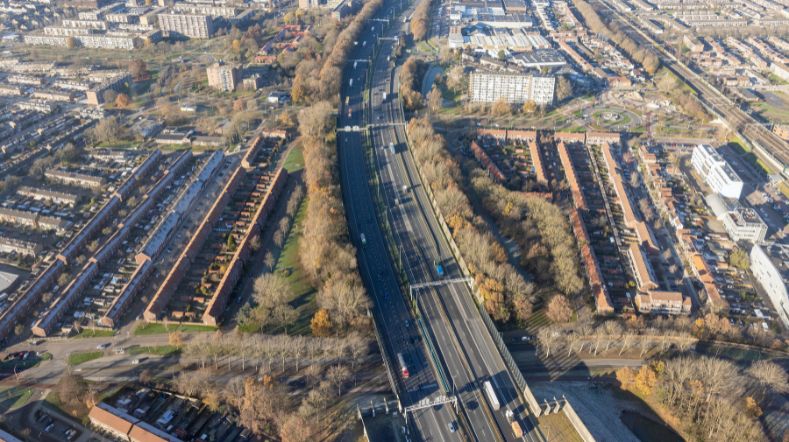A sustainable and healthy home: three modifications for a healthier indoor air climate
What does it take to create a comfortable and environmentally friendly home? When people consider this question, they often think of smart energy systems or the application of new building materials. But what about things you don’t see, but do experience? It’s essential to make conscious choices as early as the design stage of homes and residential areas. We’d therefore like to share three tips with you.
Indoor air climate: an underrated aspect of sustainable living
In the sustainable home, a healthy indoor air climate and sustainability are both needed to create a comfortable and environmentally friendly place to live. Sustainable homes have a positive impact on the environment. A healthy indoor environment has direct benefits for residents, contributing to better air quality, which promotes health and well-being. Allergy and asthma symptoms can be reduced and it makes the house feel comfortable – not too humid, chilly, or hot.
In many homes, however, the indoor air climate is not good. The wrong ventilation systems and cheap filters make indoor air less healthy than people think it is. And fixing the problem afterwards is expensive, invasive, and often not the best choice.
It’s therefore essential to make conscious choices for a healthy indoor air climate at a much earlier stage. This is the building plan stage of a residential area and during the housing design process. So what should you consider? With the following modifications, you’ll enjoy three improvements for healthier indoor air quality.
Three tips for a healthier indoor air climate
Good ventilation brings fresh air into a home 24 hours a day. And that’s important for a healthy indoor air climate. If you don’t ventilate, or don’t ventilate enough, the risk of health problems increases. This can be due to mould growth caused by moisture released by showering, washing, and breathing. Or through harmful substances released during frying.
Fresh ventilation air enters the home from outside. But if the outdoor air is polluted, then ventilating will do just the opposite, bringing unwanted substances into the home. This can be mitigated when building or converting a house by making sure it is known on which side of the building the air is least polluted. This may vary from one property to another. Drawing in ventilation air on the cleanest side improves the air quality in the home. The side of an existing or planned house that’s exposed to the least air pollution is usually the rear of the building, which is as far as possible from the road.
Case study: the Prince Willem Alexander school is located on The Hague’s central ring road. A busy road where concentrations of soot, particulate matter, and nitrogen dioxide are greatly elevated. Our advice was therefore to draw ventilation air as far from the road as possible. The air intake was therefore moved to the back of the school building. This resulted in a 27% lower nitrogen dioxide concentration in the classrooms!
Since 1980, new-build houses have mostly been delivered with balanced ventilation. This type of ventilation ensures that outdoor air enters the home and discharges the same amount of indoor air outside. This is convenient, as it means residents no longer have to worry about ventilating their
home. For optimal system operation, it is necessary to change the filters once or twice a year. To prevent the heat exchanger from slowly clogging up, the system includes standard G3 filters to protect the heat exchanger. However, these filters completely or nearly completely fail to block particulate matter, so that it keeps swirling around inside the home. With a special F7 particulate matter filter, it’s possible to filter out up to 85% of *PM2.5 particulate matter, provided that the balanced ventilation unit is suitable for F7 filters when the house is delivered. A small adjustment makes a big difference!
Particulate matter is an umbrella term for all the tiny dust particles floating in the air, both outdoors and indoors. Contrary to popular belief, particulate matter is also released by burning candles, using the fireplace, and frying food.
*particulate matter refers to dust particles up to 10 micrometres, or PM10 (particulate matter). PM2.5 denotes even smaller particulate matter, a fraction of PM10.
Frying releases particulate matter. In most homes, frying food is the main source of particulate matter that can linger for hours after cooking.
Did you know that a good cooking extractor requires at least 300 m3/hour extraction capacity during cooking? Building regulations assume 75 m3/hour and in practice it’s often even lower.
In single-family houses, residents can usually install their own ducting port in the wall to discharge fumes from the kitchen to the outside. Even better and more convenient is connecting a motorless extractor hood to a ventilation system with sufficient capacity. However, this does require sufficient capacity to be included in the design of the house. Another advantage: because the extractor hood has no motor, it also makes no noise. This concept has been applied in the NeroZero home.
Flats present a greater challenge, as the ventilation capacity described in the building code is applied in virtually all of them. Residents are practically never permitted to install their own ducting port through the outside wall. Residents therefore generally use a recirculating extractor hood, which does not adequately capture particulate matter.
To achieve a healthier indoor air climate in flats, it’s important to include provision for a cooking extractor outlet at the design stage. For example, by means of a separate discharge duct to the roof, to which residents can connect their cooking extractor. Or, if each flat has its own ventilation unit, by applying the Nero Zero concept.
Contribute to innovations in construction?
The Dutch agreement on Future-proof Construction is concerned with better applying innovation, legislation, and regulations in construction.
Get inspired
Making air healthier along busy roads


Nitrogen dioxide advisory values exceeded much more often when cooking with gas compared to electric cooking


Healthy air in the home with less particulate matter


Monitoring installations, components, and energy

